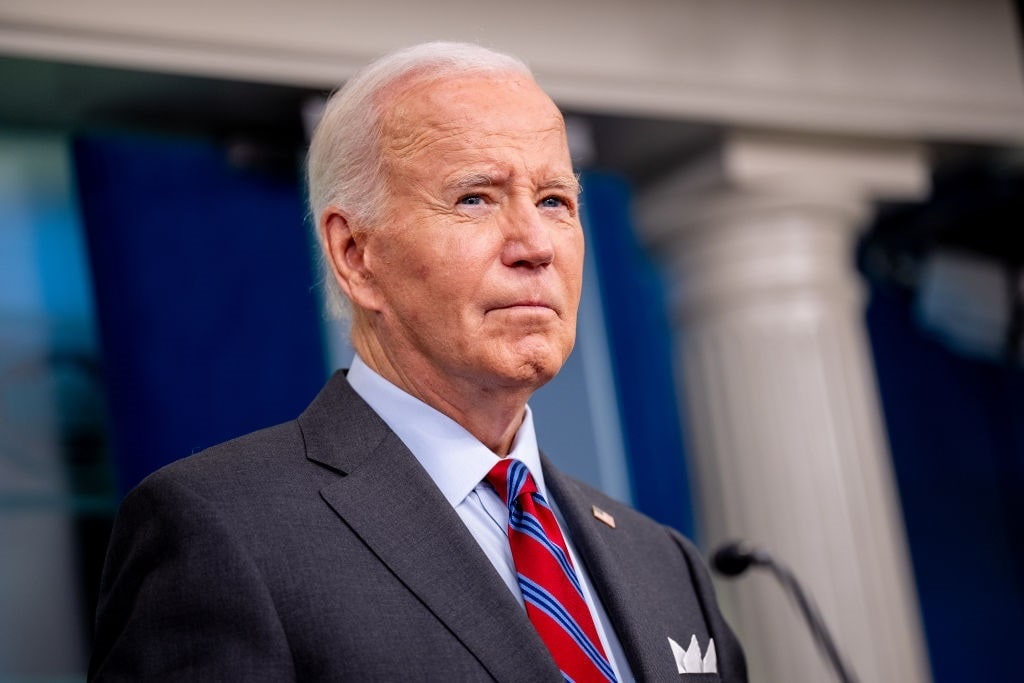President Joe Biden will visit Milwaukee, WI, today (Oct. 8) to highlight the administration’s infrastructure campaign, nearly three years since the Infrastructure Investment and Jobs Act was signed into law. Biden is expected to champion the White House’s march to replacing lead pipes and creating jobs. Like other facets of Washington’s pursuit to build or rebuild America’s infrastructure, the government has slapped lofty timelines and expensive price tags. Progress will be key as the president’s efforts routinely generate negative publicity.
Biden Infrastructure — A Primer
In November 2021, Biden signed the $1 trillion Infrastructure Investment and Jobs Act, one of three landmark legislative initiatives under the current administration. The enormous domestic spending bill aimed to channel billions of dollars to states and local governments to build or upgrade bridges, broadband internet connections, roads, and public transportation systems. The legislation, which was championed as a bipartisan effort because it attracted just 13 House Republicans and 19 Senate GOP lawmakers, also prioritized anything related to green energy.
Biden and Vice President Kamala Harris also promised that the infrastructure law would create “millions” of jobs. However, the White House had to quickly clarify and confirm that officials were referring to “job years.” A job year equals one job for one year. If an individual is employed at a new job for two years, it would equal two job years rather than one.
“My message to the American people is this: America is moving again, and your life is going to change for the better,” Biden said in a South Lawn ceremony.
Three years later, has the administration delivered on its pledge to revitalize the nation’s infrastructure? Washington would claim it has been a resounding success because of all the state and local government applications to receive federal funds. Of course, any cash-strapped jurisdiction’s governor or mayor – Republican or Democrat – would undoubtedly tap free money from Congress for the opportunity to host a ribbon-cutting ceremony. So, results would make a better assessment.
EV Charging Stations
In June, Liberty Nation News reported on internal Department of Transportation (DoT) memos obtained from the Washington Free Beacon that confirmed “only seven or eight” electric vehicle charging stations had been installed. The Biden administration’s goal was to construct half a million charging stations by 2030, relying on $5 billion through the National Electric Vehicle Infrastructure (NEVI) program and $2.5 billion in Charging and Fueling Infrastructure (CFI) discretionary grant funding.

(Photo by Mario Tama/Getty Images)
US government officials and left-leaning think tanks have attributed the sluggish building pace to various reasons, from complicated federal and state regulations to climate change. But a senior Transportation Department staff member, speaking on the condition of anonymity, told the Free Beacon that equity requirements “are screwing everything up. It’s all a mess.”
Administration officials have since tried to shrug off the abysmal number by announcing $521 million in grants to continue expanding the nation’s EV charging network. “Charging infrastructure is being built in rural, suburban, urban, and Tribal communities alike, supplementing private investment and filling critical gaps where charging is needed most,” the DoT said in an August press release.
Got Internet?
Inside the bipartisan infrastructure law was the Broadband Equity Access and Deployment (BEAD) program. This contained approximately $42 billion in federal funds “to connect everyone in America to reliable, affordable high-speed internet by the end of the decade.” While the Department of Commerce and its National Telecommunications and Information Administration (NTIA) are tasked with distributing BEAD funds, reports suggest that neither a single business nor household has been plugged in as part of the US government’s initiative.
This past spring, NTIA Administrator Alan Davidson confirmed to Congress that “this is really a 2025, 2026, shovels in the ground project.” Lawmakers say the president’s ambitious pursuit is hampered by the NTIA’s mountain of red tape and woke-minded commands.
In an April 2023 letter to Davidson, a chorus of GOP senators noted that regulations and mandates “would discourage participation from broadband providers while increasing the overall cost of building out broadband networks.” Upper chamber Republican officials alluded to a range of requirements, such as hiring “individuals with past criminal records” and “justice-impacted participants.”
So far, they are right. Telecommunications industry representatives told MinnPost in June that they had little interest in applying for the $652 million from Minnesota’s BEAD grants. Brent Christensen, president and CEO of Minnesota Telecom Alliance, told the newspaper: “None of them would bid for the federal grants because of the regulations that would come with it — especially the requirement to provide low-cost services to low-income households in exchange for grants that would allow internet providers to build out their networks.”
Well, at least the private sector is doing a great job in extending broadband internet access. Reports from the Federal Communications Commission (FCC) or OpenVault Broadband Insights suggest that most Americans already have access to broadband internet and enjoy at least 100 Mbps download speeds. If the US government actually wanted to succeed, it would have spent $42 billion to purchase Elon Musk’s Starlink dishes for 140 million individuals!
Everything Is Infrastructure
Are childcare programs infrastructure? Is minority business development infrastructure? Is turning school buses into electric vehicles infrastructure? Indeed, the law redefines the conventional yardsticks of what constitutes infrastructure. The New York Times contended three years ago that Biden’s plan “is a radical reimagining of what infrastructure means.” And yet, as federal intervention in the childcare industry receives bipartisan support, the infrastructure package has not accomplished the goal of lower costs: According to the August Consumer Price Index report, daycare costs surged more than 6% from August 2023. It appears the government cannot even get non-infrastructure infrastructure spending right.




